Flying SWISS is one of the best ways to cross the Atlantic in economy because of the seat comfort, cabin layout, and service. But at least on my flight, our plane was showing its age.
While many carriers fly in and out of Zurich (ZRH), SWISS offers one of the few nonstop routes between the U.S. and Geneva (GVA). Combined with a sneakily cheap way to book these typically pricey flights using miles, that convenience put me in row 31 of SWISS's A330-300 heading to the Alps and back over the New Year.
SWISS has a lot going for it, including some above average economy food and service and a 2-4-2 seating layout and well-appointed seats that make the ride more comfortable than other carriers. But the outdated plane meant an ancient entertainment system onboard … and not an outlet in sight.
Still, it's a worthwhile way to get to Europe – especially for the price I paid during the hectic and expensive holiday season.
Want to splurge for business class instead? Read our review of SWISS business class on the 777!
How to Book
Booking economy, you can occasionally find some cheap fares through its Zurich (ZRH) hub and to its other major airport in Geneva (GVA). We search for and find these fares all the time for our Thrifty Traveler Premium members.
These lowest-priced economy light fares include a small, 18-pound carry-on bag. You can pay a fee to check a bag or upgrade to Economy Classic to get a free checked bag and seat assignment.
One note: At no point did anyone weigh my carry-on bag, which was closer to 50 pounds than the 18-pound limit as it contained my ski boots.
But there can be an even better way to book SWISS tickets: using points and miles.
SWISS is part of the Lufthansa Group, but you likely won't use the airline's Miles and More program. Instead, SWISS's Star Alliance partners like United MileagePlus, Air Canada Aeroplan, or Avianca LifeMiles offer the best rates. All these points are easy to earn through credit cards with transferrable points from Chase, American Express, and Capital One.
You could book roundtrip flights to Geneva for 63,000 United miles and under $60 in taxes and fees. These same flights are available through Air Canada's awesome and easy-to-use mileage program for 70,000 Aeroplan points roundtrip and $54 in taxes and fees, too. But the cheapest method by far is Avianca LifeMiles. You can book the one-way from New York to Geneva for just 16,500 miles (and sometimes less). Add on 30,000 miles for the return, and it's just 46,500 LifeMiles and about $100 in taxes and fees for a roundtrip to Geneva. You can transfer LifeMiles from American Express, Capital One, and Citi ThankYou points.

To book these flights, I transferred a stash of American Express Membership Rewards points instantly to my LifeMiles account to book. Considering the cash price of these flights was close to $1,000 roundtrip, it was a tremendous deal. To top it all off, booking through LifeMiles meant I got an Economy Classic fare, which meant both my ski and boot bag were free!
At Thrifty Traveler, we don't accept freebies. We use our own points, miles, or cash to pay for every single flight or hotel you see reviewed here – including this one!
LifeMiles is from perfect. Its customer service is lackluster in even the best of times – I've found the best way to reach them is by chatting via WhatsApp, while getting what you need through their customer support line is incredibly hit or miss. Plus, the airline charges a whopping $200 redeposit fee on award tickets like these if you need to cancel to get your miles back.
Check-in, Boarding, & Baggage
Checking in for both legs of this roundtrip was a breeze. There was a short wait at JFK's Terminal 1 because we arrived almost exactly three hours before the flight. Flying SWISS out of JFK, you check in at the Lufthansa check-in area.
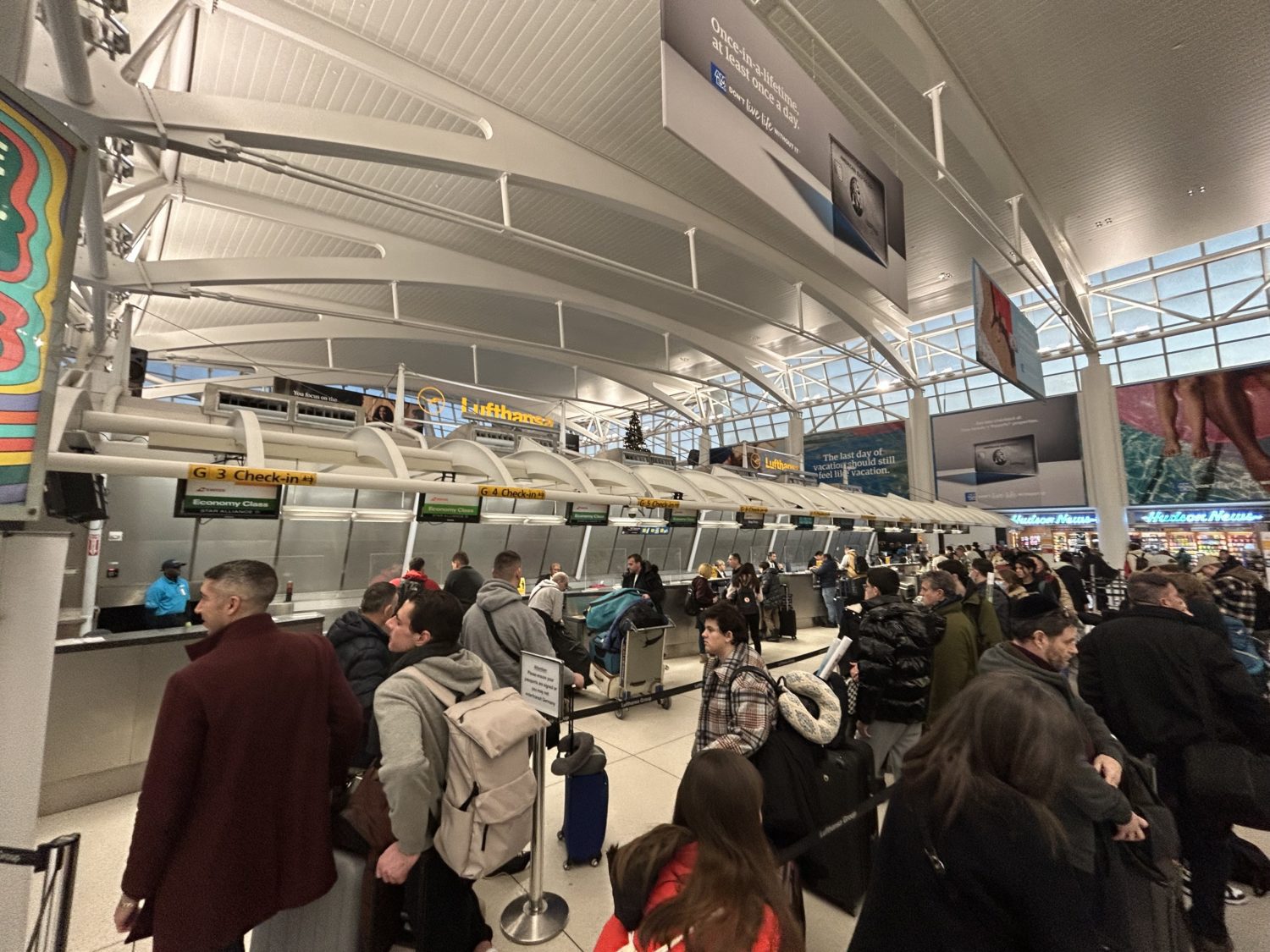
In Geneva, the check-in was even simpler. There were many helpful agents ready to help when I arrived about four hours before the flight.
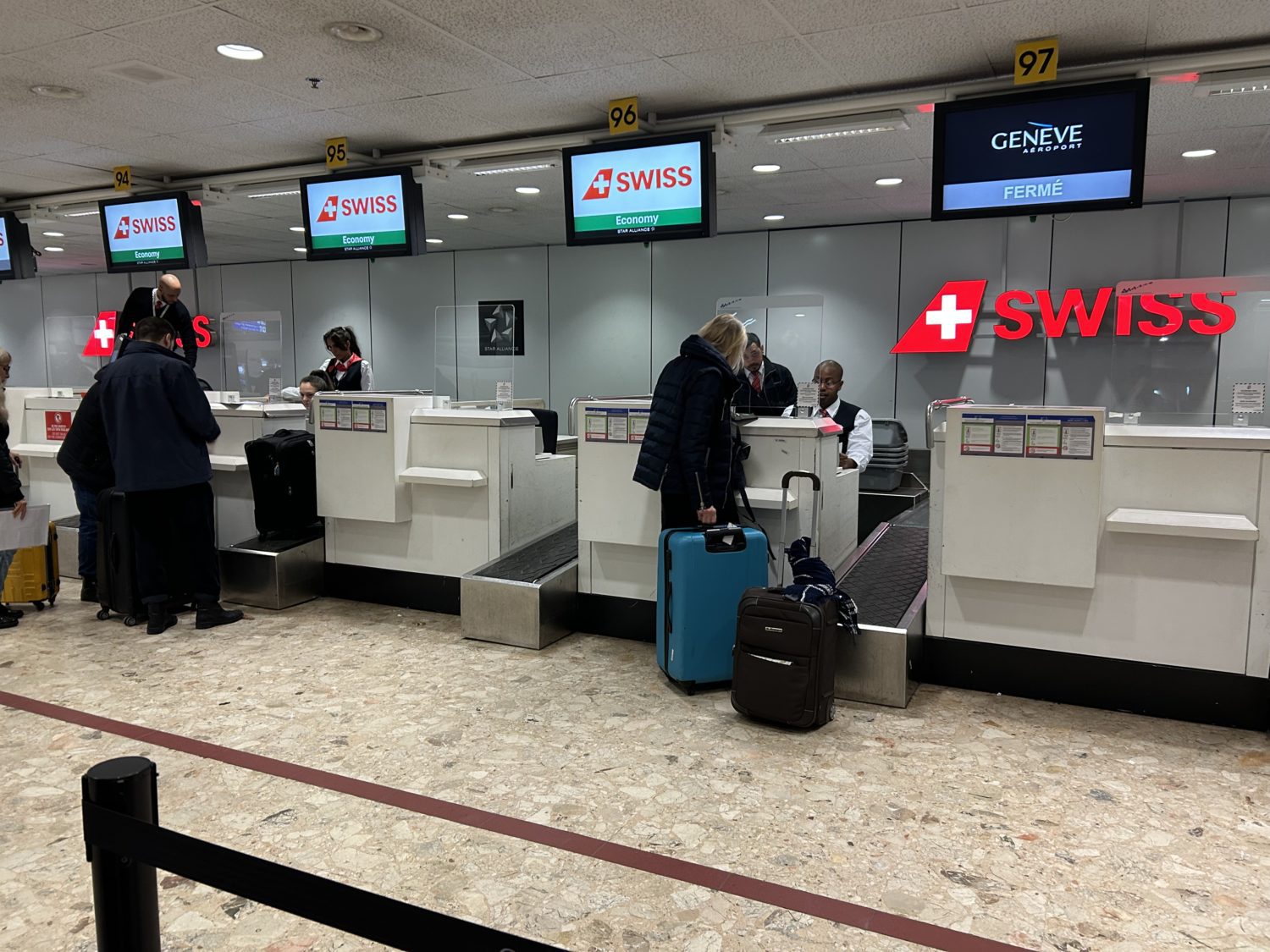
The boarding process in Geneva was a little longer thanks to a busy passport control line and a bonus security check for the U.S.-bound flight right at the gate. Still, the boarding was orderly and quick once you got through both queues.
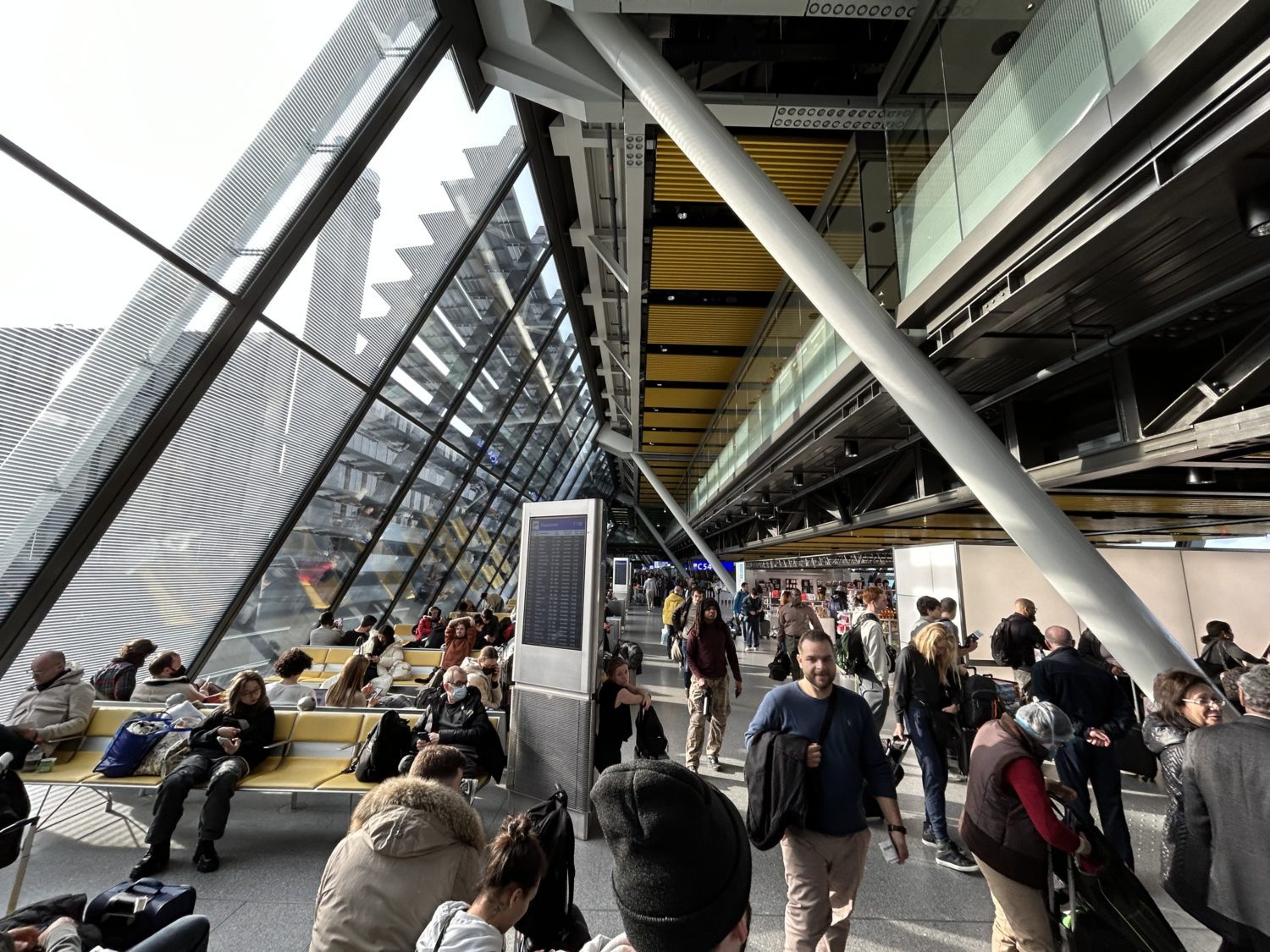
Also, the Geneva airport is just cool with the sloped, glass walls on one side and the planes and jetways on the other.
SWISS's checked baggage system had some…peculiarities, however. I was traveling with two other friends who were both checking ski bags on the journey. At no point, at either JFK or GVA, did anyone even weigh my bag, which was about 49.99 pounds when I packed it. Another friend had a different check-in agent who made him remove his ski boots from his bag to get it under 50 pounds, even though his bag was barely a pound overweight.
The baggage weight discrepancies aside, all of the check-in agents were well aware of SWISS's policy of checking a ski bag and boot bag as one, single checked item. If you're checking bags with SWISS, everything should be fine, but I'd be sure to adhere to the rules for weight limits before heading to the counter.
Cabin and Seats
The economy cabin on SWISS's A330-300 is laid out in a way that makes it among the most comfortable economy cabins I've ever flown.
The 2-4-2 cabin on these planes is ideal. That means travelers only have to jostle with one other person at most. And it's perfect for travelers flying in pairs or families of four, who can claim their own little section.
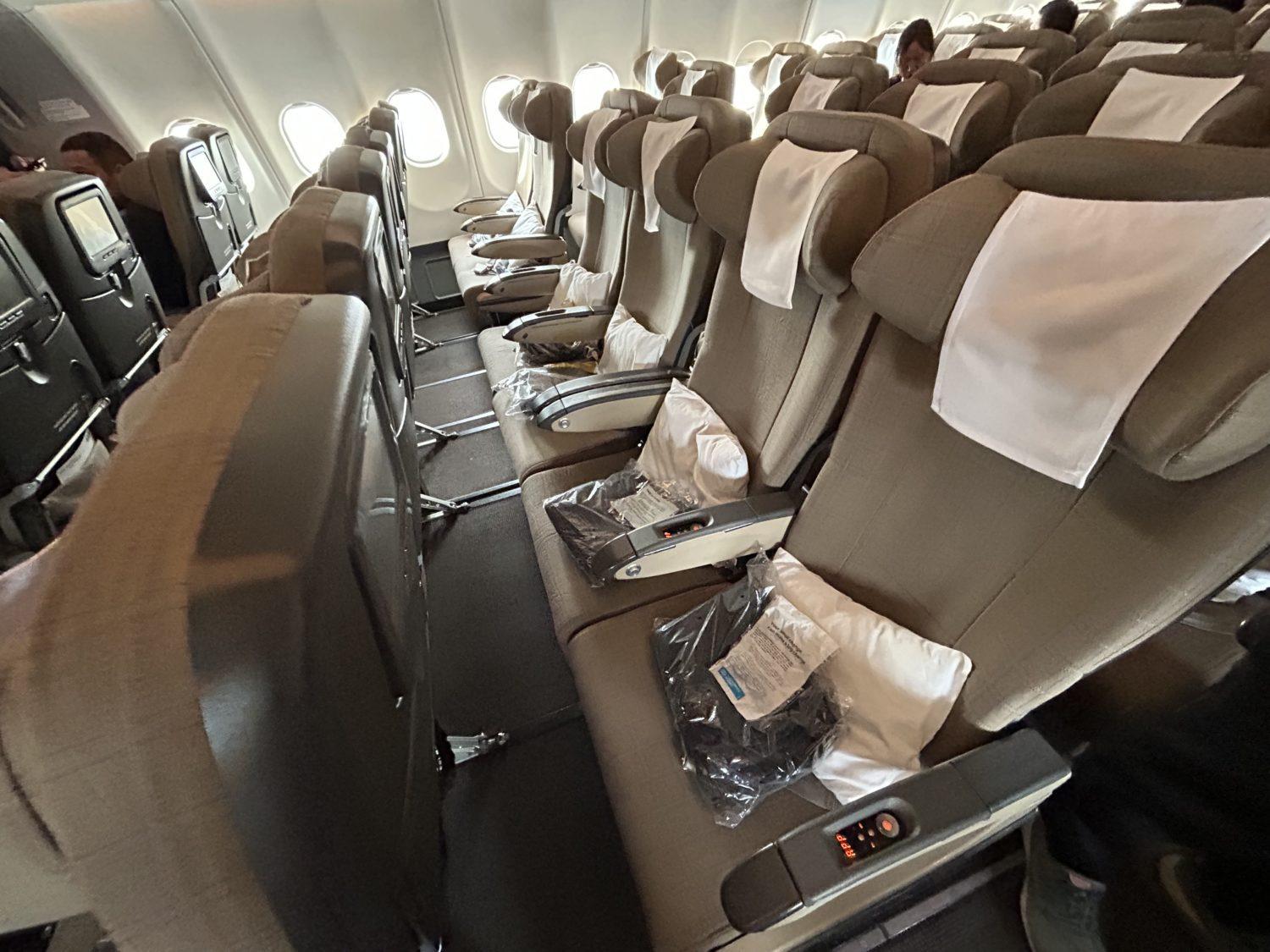
If you have seat selection, I'd recommend booking the seats on the window. The simple two-seat layout is a pretty stress-free flying experience no matter what seat you're in.
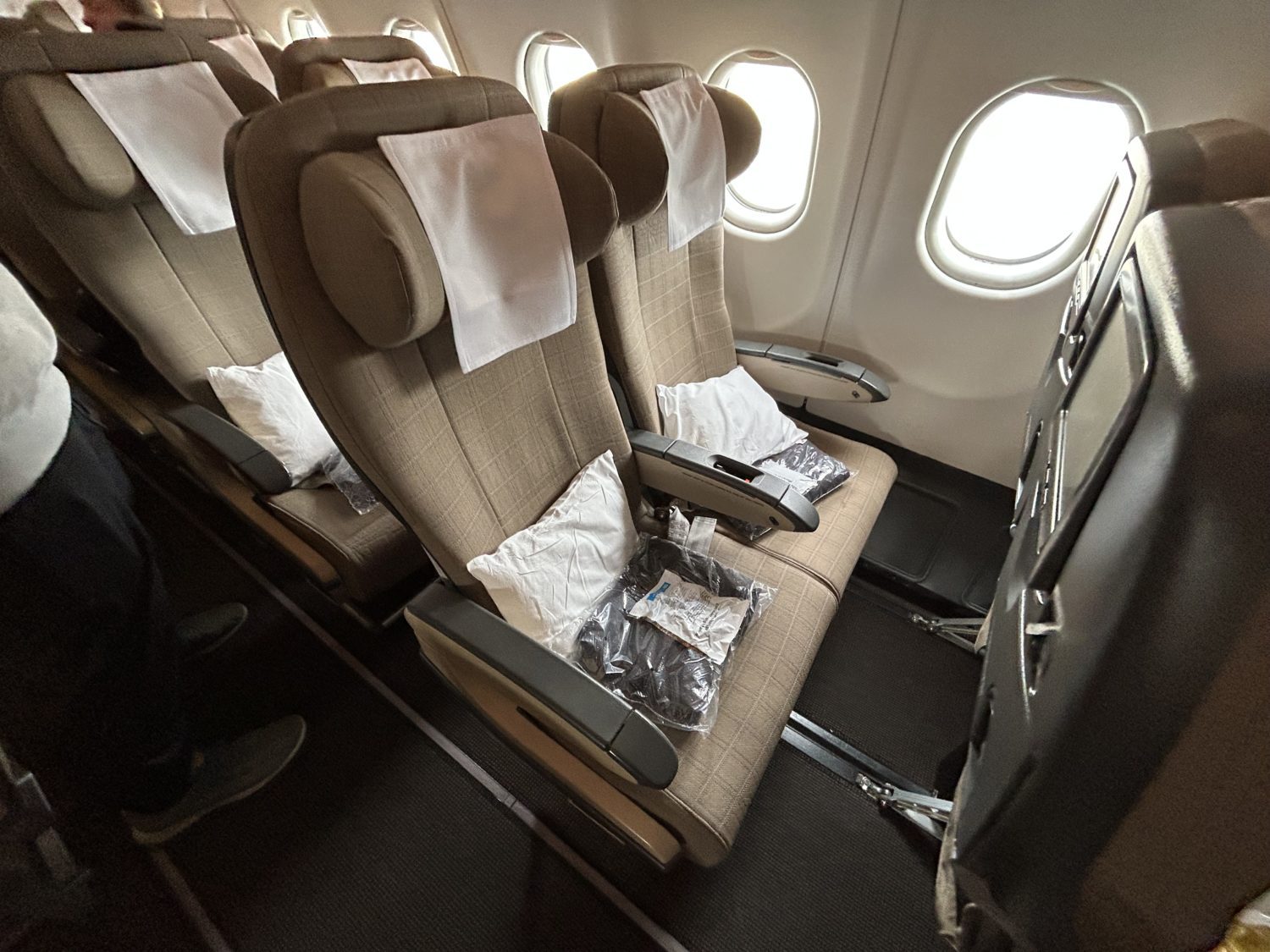
The economy cabin is divided in two by a galley: A small cabin at the front and a much longer cabin at the rear. Picking a seat in the smaller, forward cabin is often more expensive.
The back cabin starts at row 29. I opted for row 31 on both legs of the journey. Here's a look at the rear cabin.
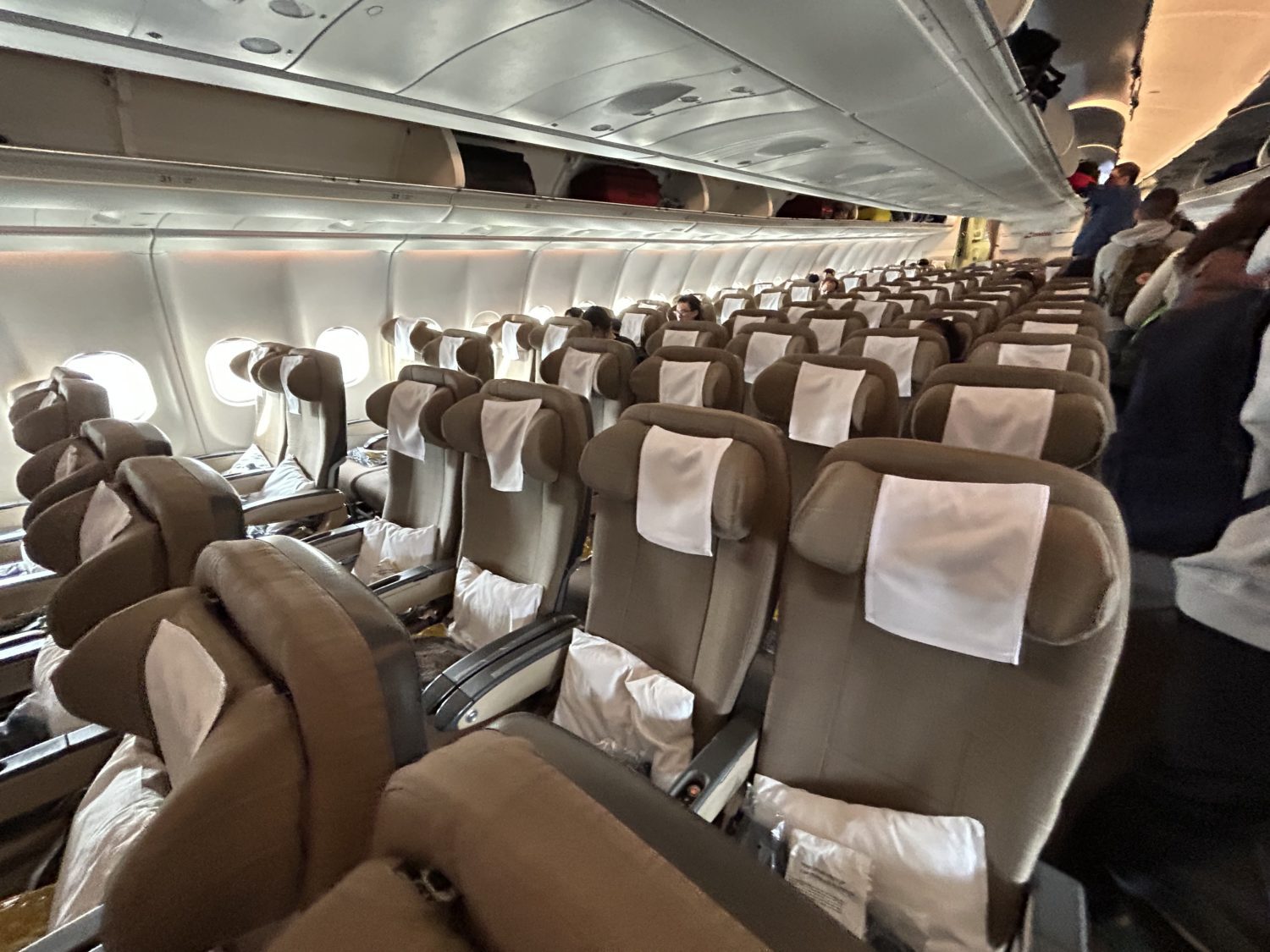
When you get to your seat, you have a very simple stack of amenities: a pillow, a blanket, and a pair of ear-bud headphones.
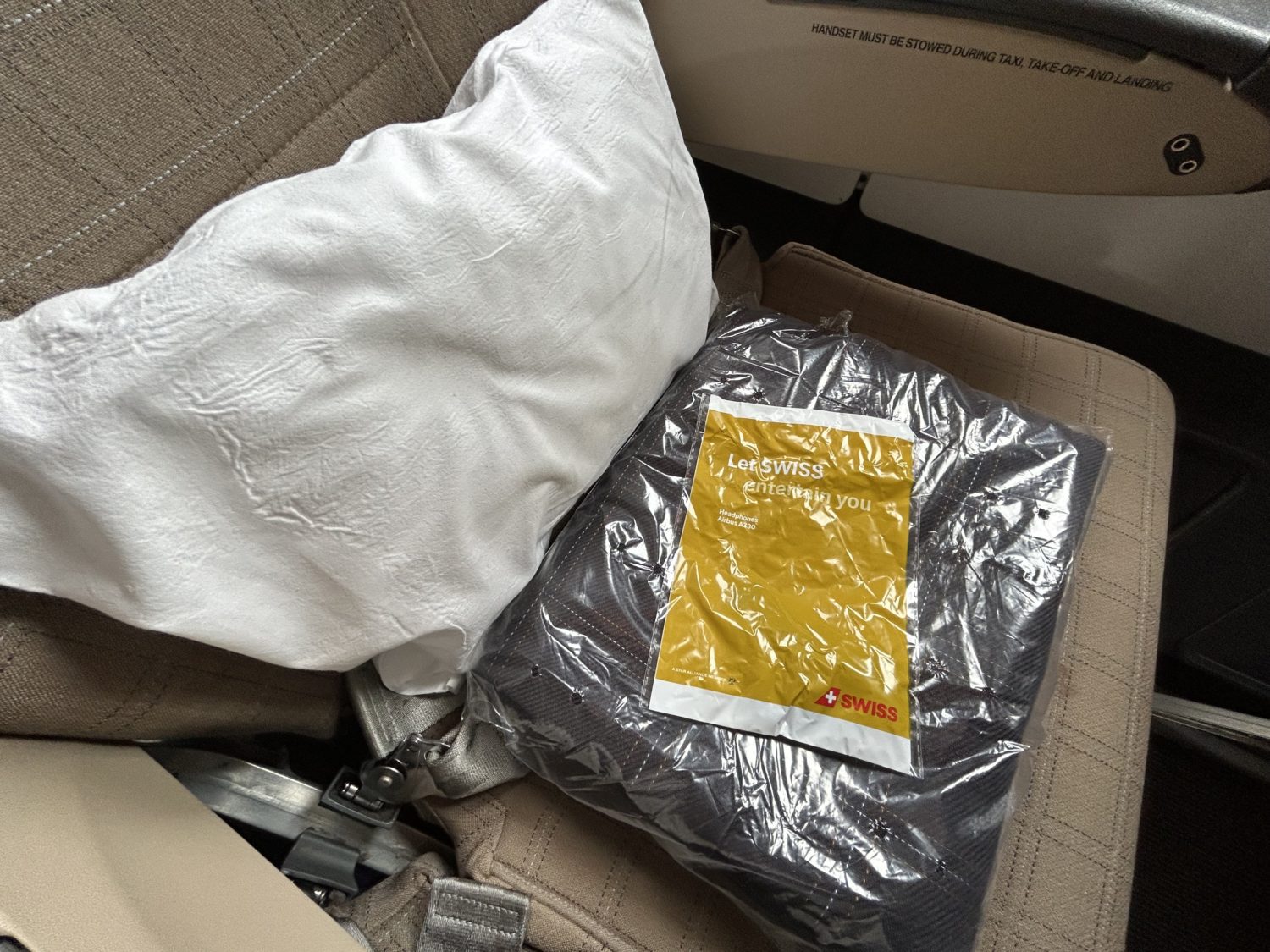
The legroom on these planes if very typical for an economy flight with 31 inches (unless you pay up for an exit row or bulkhead seat).
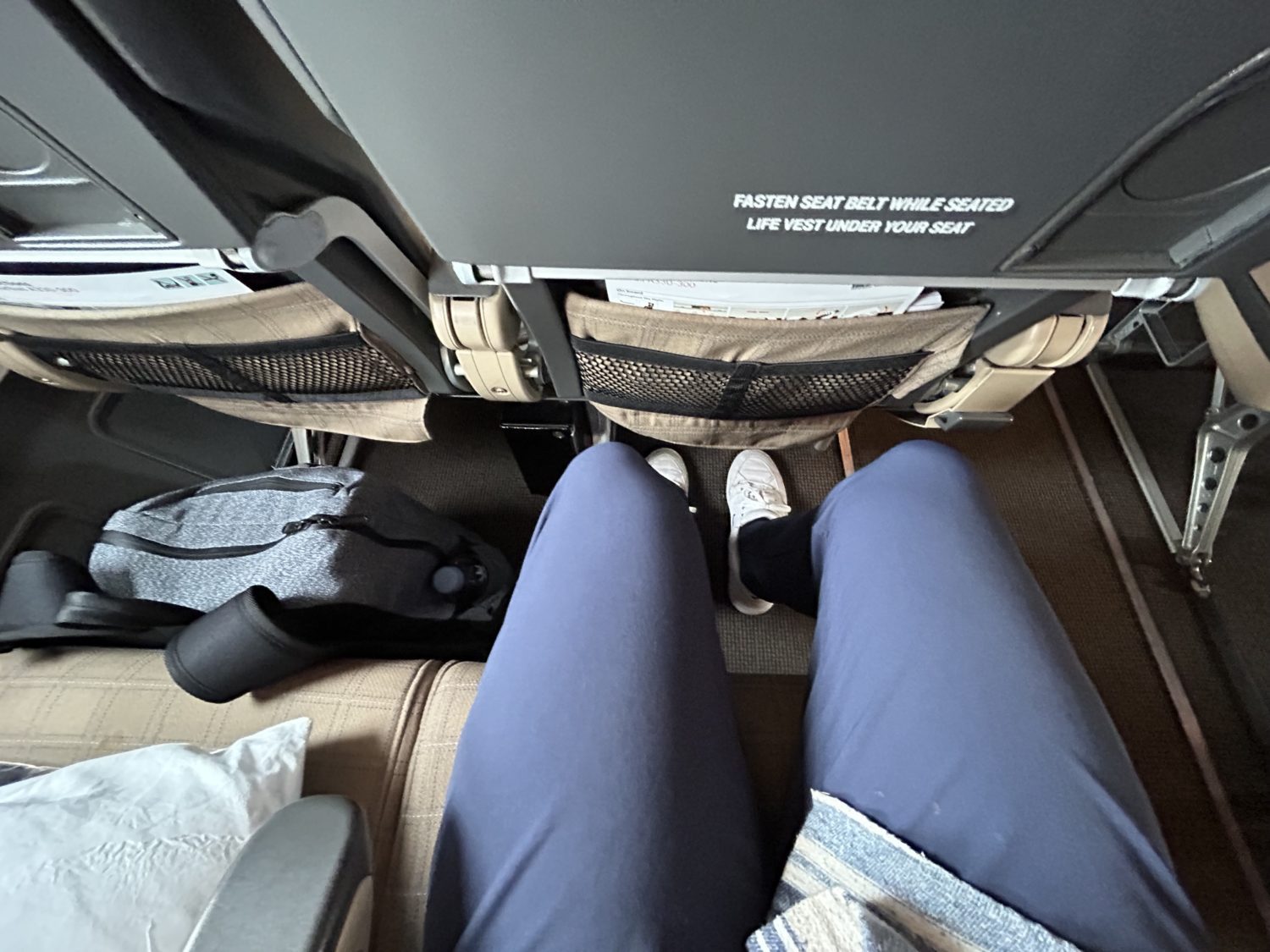
Each seat has a cupholder you can fold down separately from the tray table.

The tray table is also a standard size with a place for a drink. It was big enough to hold my laptop when I needed it and could also fit my iPad along with a drink no problem.
The seats all come with a USB power port at every seat, which is really nice. My port worked just fine on both flights. But aside from these USB ports, you won't find any other power available: There's no universal power socket in on these planes.
The cabin was dimly lit, but mostly dark during the nighttime hours. It made for easy sleeping with a mask and a travel pillow.
Food, Drinks & Service
Overall, the food and drink in SWISS economy were excellent. I was very pleased with both legs of my trip.
At cruising altitude, flight attendants came around with a full drink service, as well as some mini breadsticks that were very tasty. The main course came soon after.
We were given a choice of chicken or pasta on one flight and beef or pasta on the other. I chose the beef on the way there (not pictured due to a dimly lit cabin) and the pasta on the way back. It also came with ample sides.
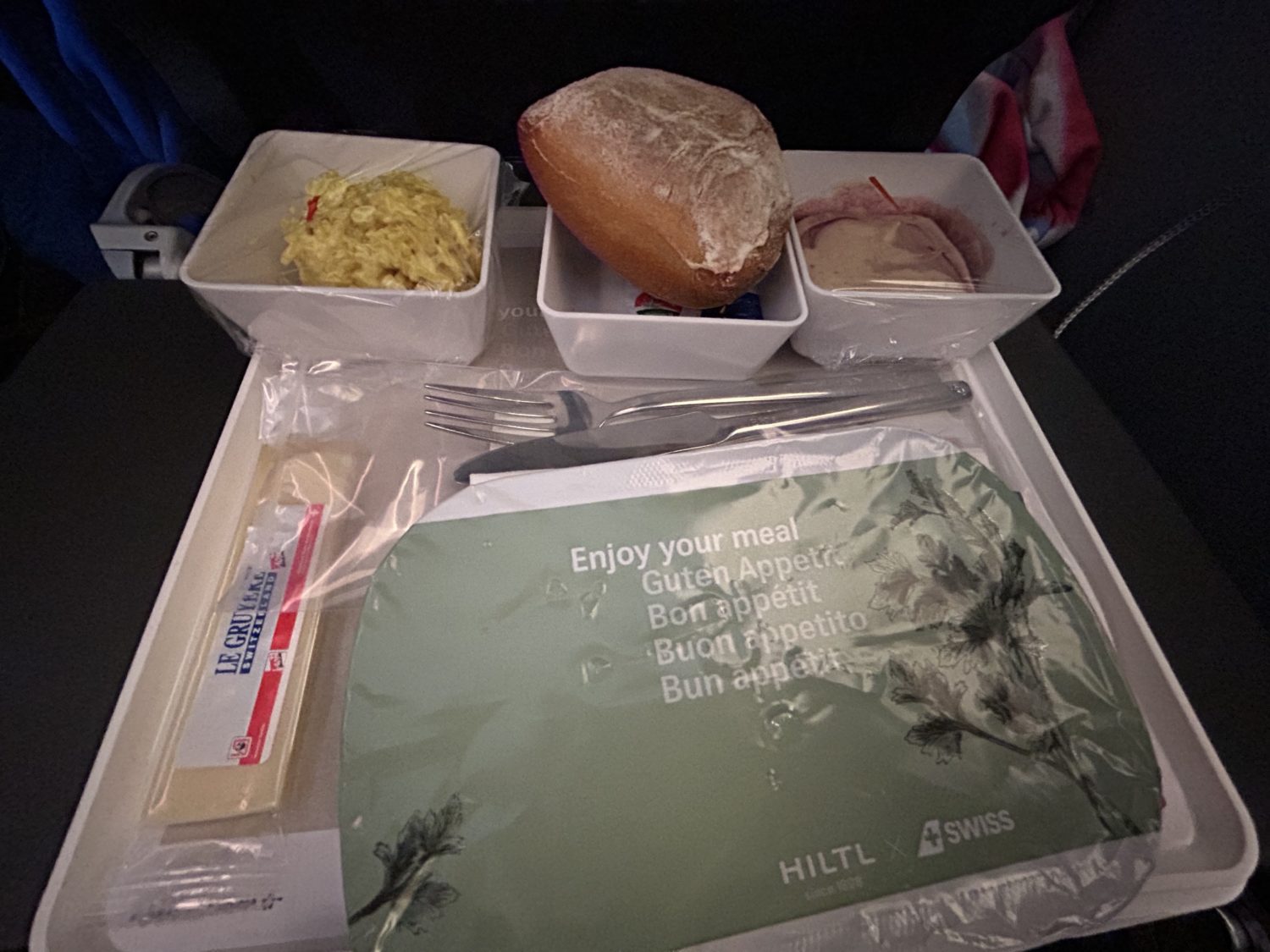
Though dull in appearance, this curry pasta was tasty. Sure, the veggies were a little soggy, but this was one wholly adequate plane meal flying economy.
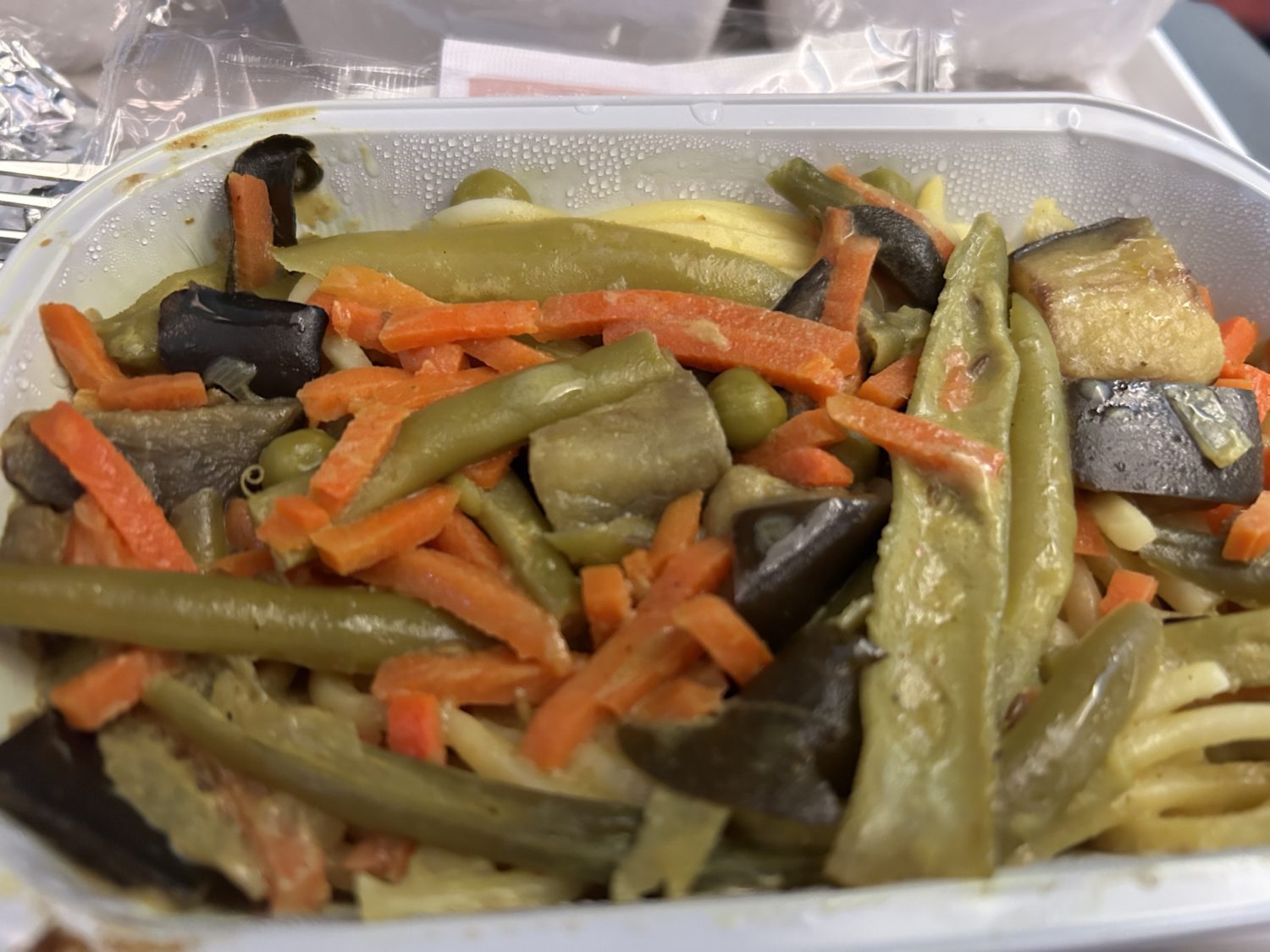
A raspberry-flavored creamy dessert was a nice touch on the meal. SWISS uses real cutlery – not the plastic or wood silverware you typically get in economy.
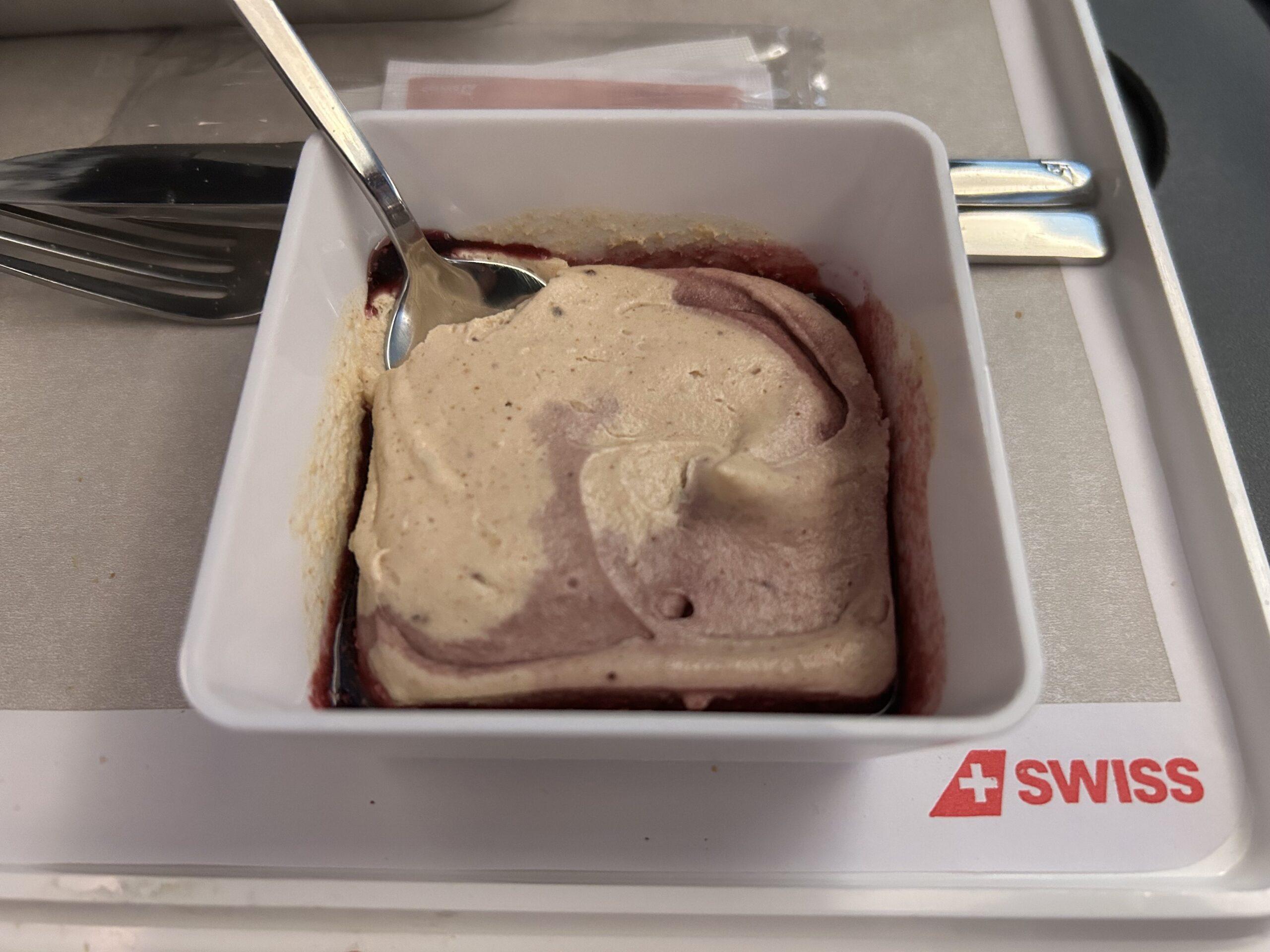
Before landing, we got one more snack-sized meal which consisted of this savory pastry pie and a small tub of Movenpick ice cream. Both were awesome served with another cup of coffee, if you so desired.

And finally, a staple of every SWISS flight: The flight attendants brought everyone a bar of chocolate before landing.
Wi-Fi & Entertainment
My SWISS economy experience was very good overall, but this is where the airline really fell short.
If you're planning to fly SWISS, make sure you don't have any work to do – the Wi-Fi situation on these SWISS flights was bad. While many airlines have switched to Wi-Fi purchase options that last the entire flight, SWISS charged by the megabyte. And it's not cheap.
The CHF to USD conversion is close to 1:1, so you can get a pretty clear picture of what these Wi-Fi packages cost.
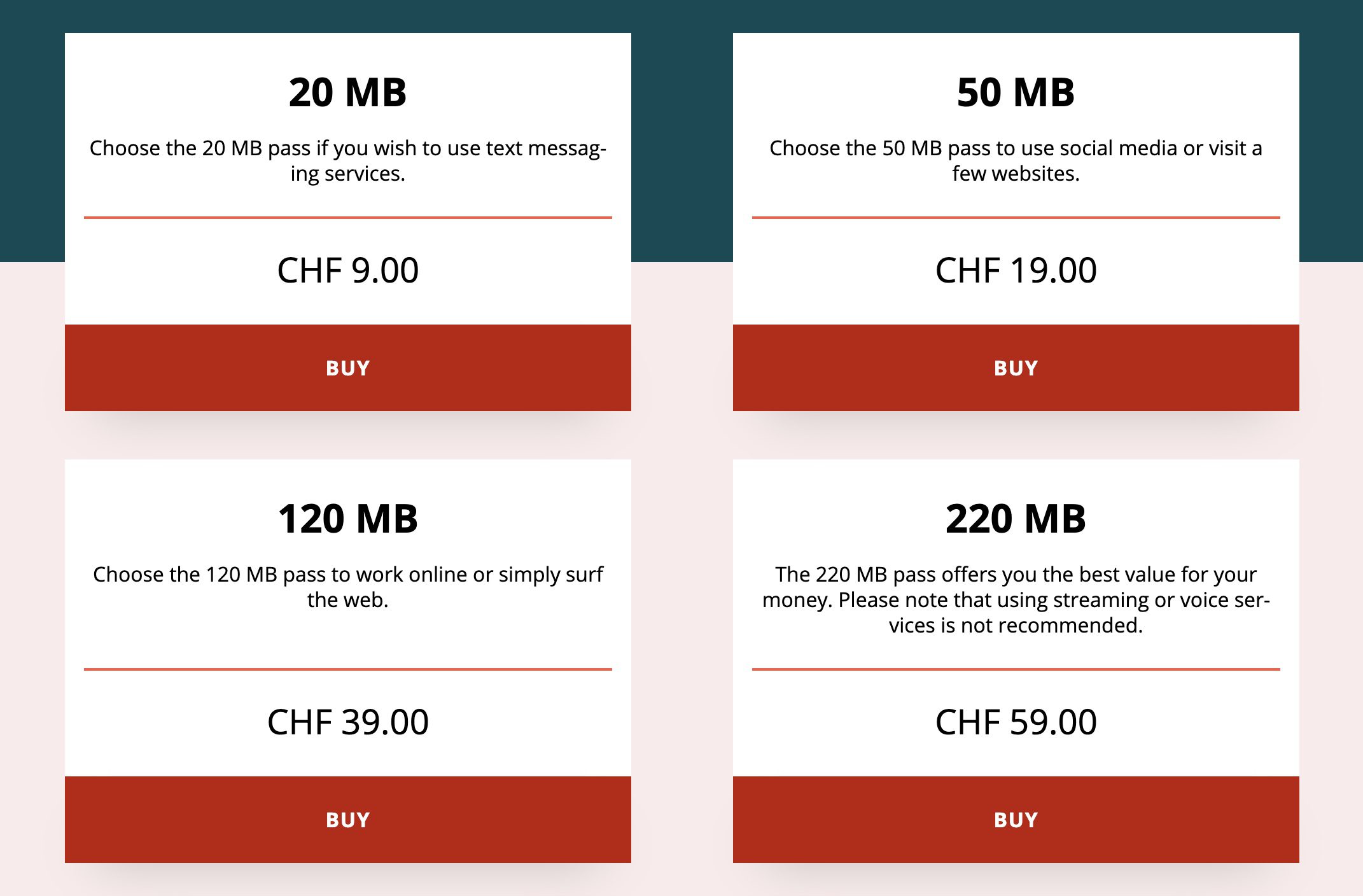
First, I purchased the $39 120 megabyte connection which it said was best to “work online.” A few Google Flights searches and Slack messages later, that data was gone just 45 minutes or so into an eight-hour flight. Not good. I then went back and purchased the full 220 megabyte package, which I rationed to last the remaining six hours. If you're keeping count at home, I spent about $100 on internet for a single flight. Brutal.
The one upside is that you can easily transfer the connection from one device to the other. You can't, however, use two devices at once. You can only connect one at a time using your email and login.
The entertainment screen on SWISS's economy seats left a lot to be desired, too. Each seat had this very old, small, standard definition screen.
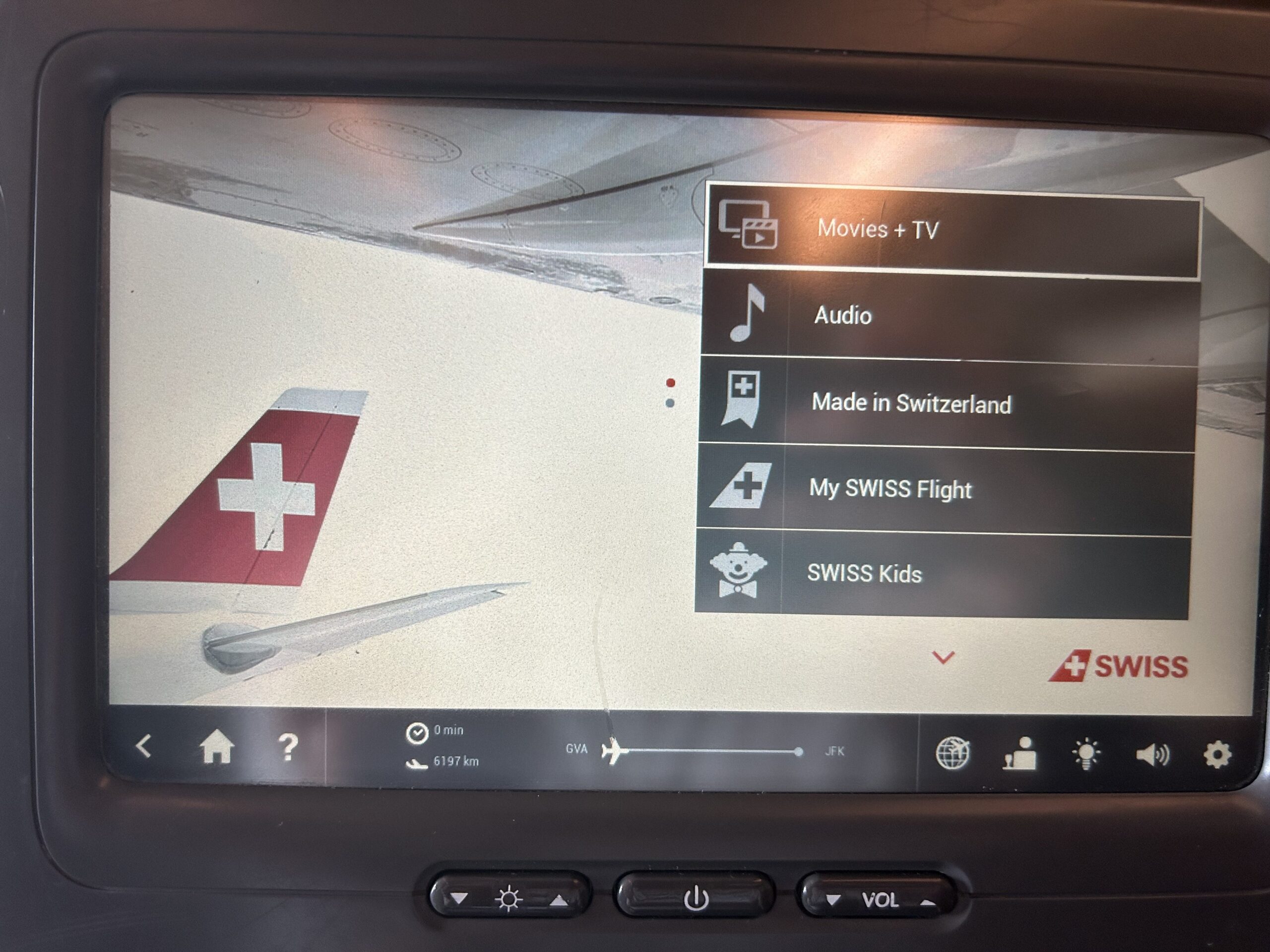
While it was a touch screen, it was very difficult to actually use on both of my seats. There is a small remote in the armrest that makes controlling the screens easier, but it's a clunky, outdated setup that wasn't a perfect solution, either.
The movie and TV offerings were just fine, but it was a not a robust list.
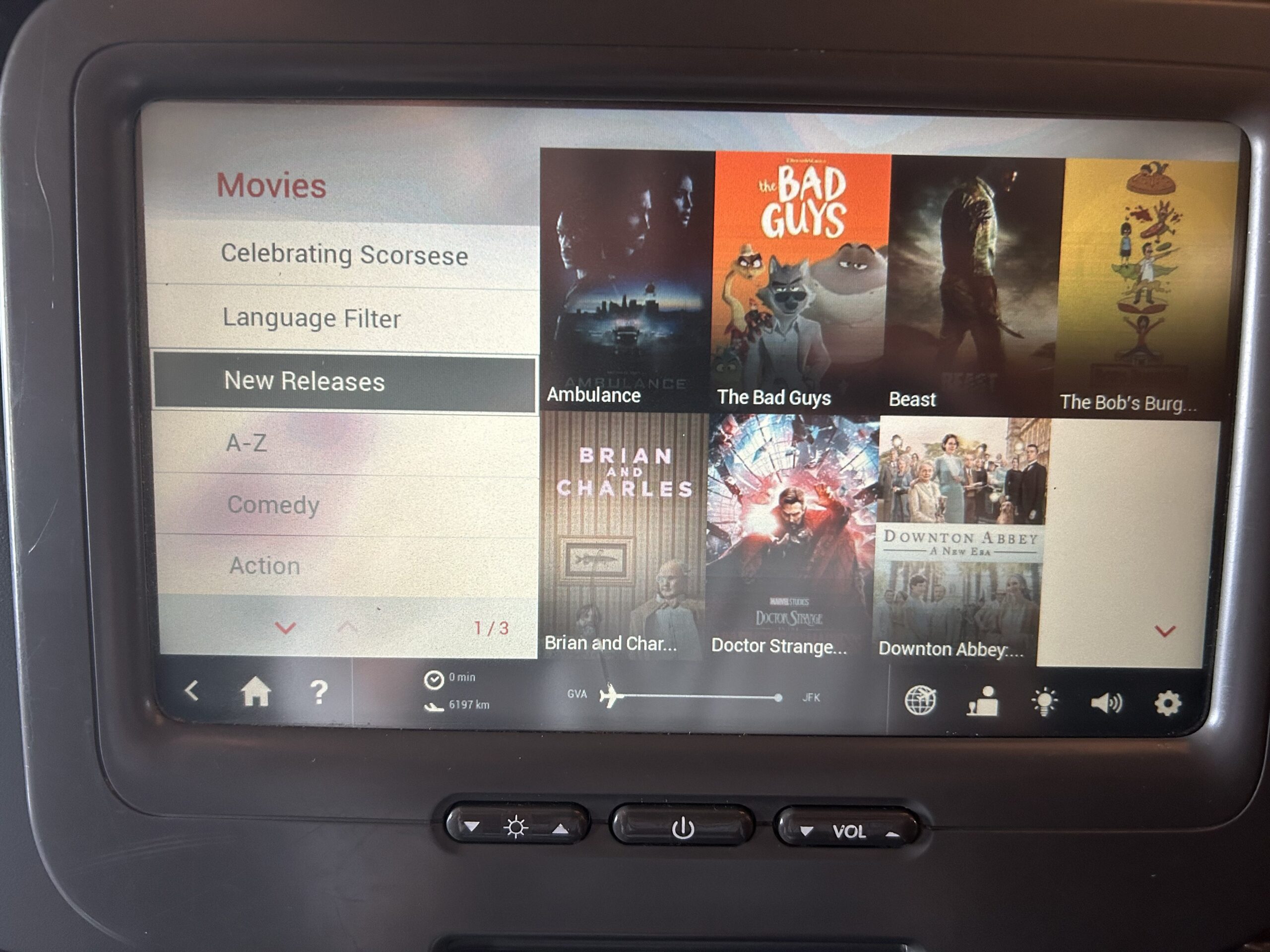
Like many international carriers, SWISS only has the two-pronged headphone jacks. The jack is located in the armrest.
The Wi-Fi and inflight entertainment paled in comparison to what you'll find flying many other U.S. or international carriers across the Atlantic Ocean.
Bottom Line
SWISS Economy is a super comfortable way to cross the Atlantic thanks to a great 2-4-2 seat layout, good food and drink, and a comfy seat. But the seats and entertainment are in bad need of a modern update on the A330-300.
If you can book this seat for a good cash fare or a cheap award rate, it's certainly worth it to fly the Switzerland-based carrier to Europe and back or beyond.
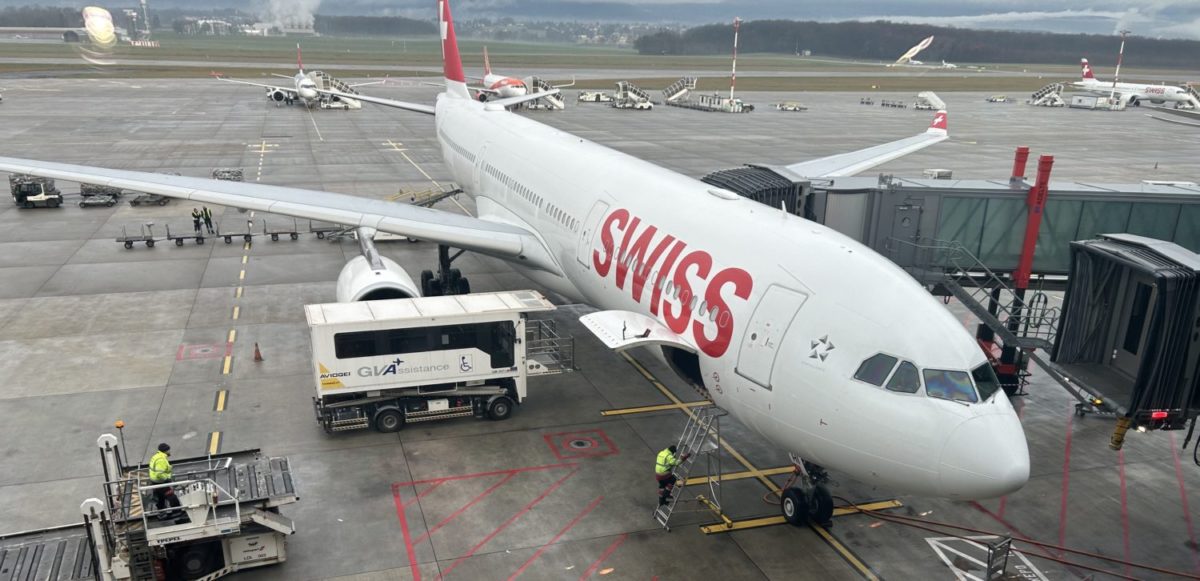



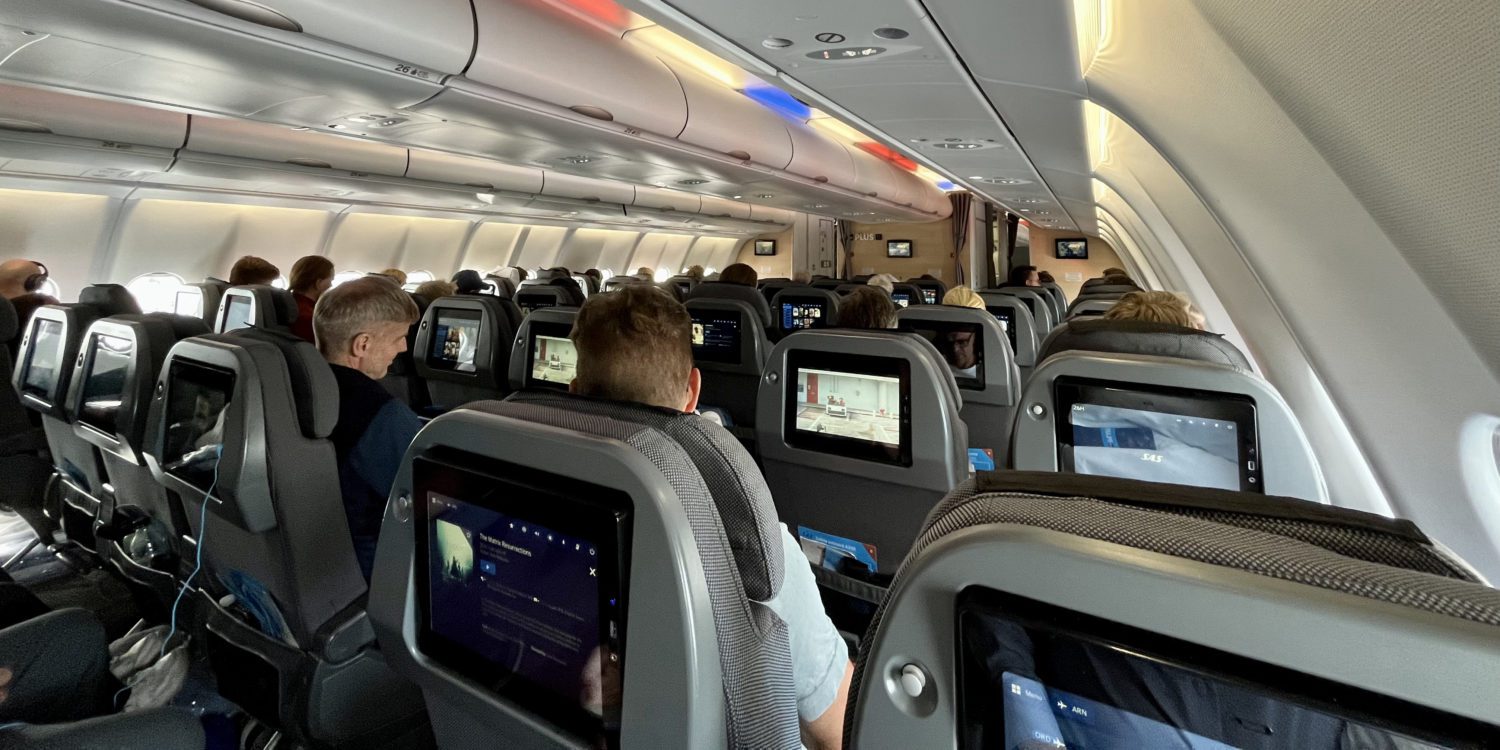

What ski boot bag do you use? I find most of the backpack type ones don’t technically fit within carry on dimensions.
I actually don’t see the need for an actual “boot bag.” I normally just lay my boots flat in the bottom of my carry-on so it will fit in an overhead bin and I put other, non-essential gear in with my skis to make room for the boots.
I always do this on the way to my ski destination so the airline losing my luggage doesn’t ruin my trip. (Rental skis aren’t the end of the world. Rental boots can be…) I usually check my carry-on on the way home as a “boot bag.” In every case except once (at the Jackson Hole Airport), airlines will normally accept any luggage as a “boot bag” when paired with the ski bag without question.
In short: Any duffel bag will do!